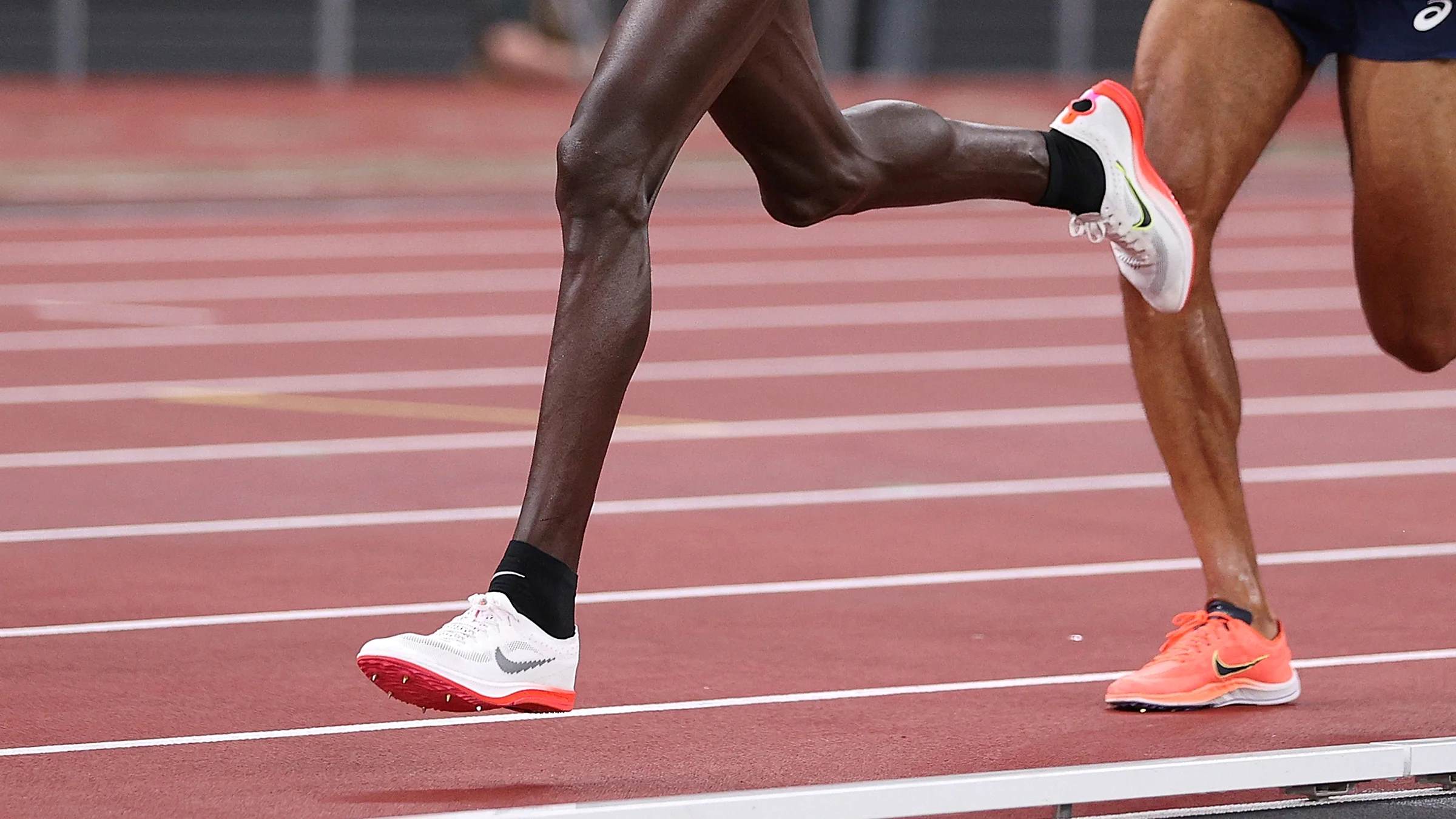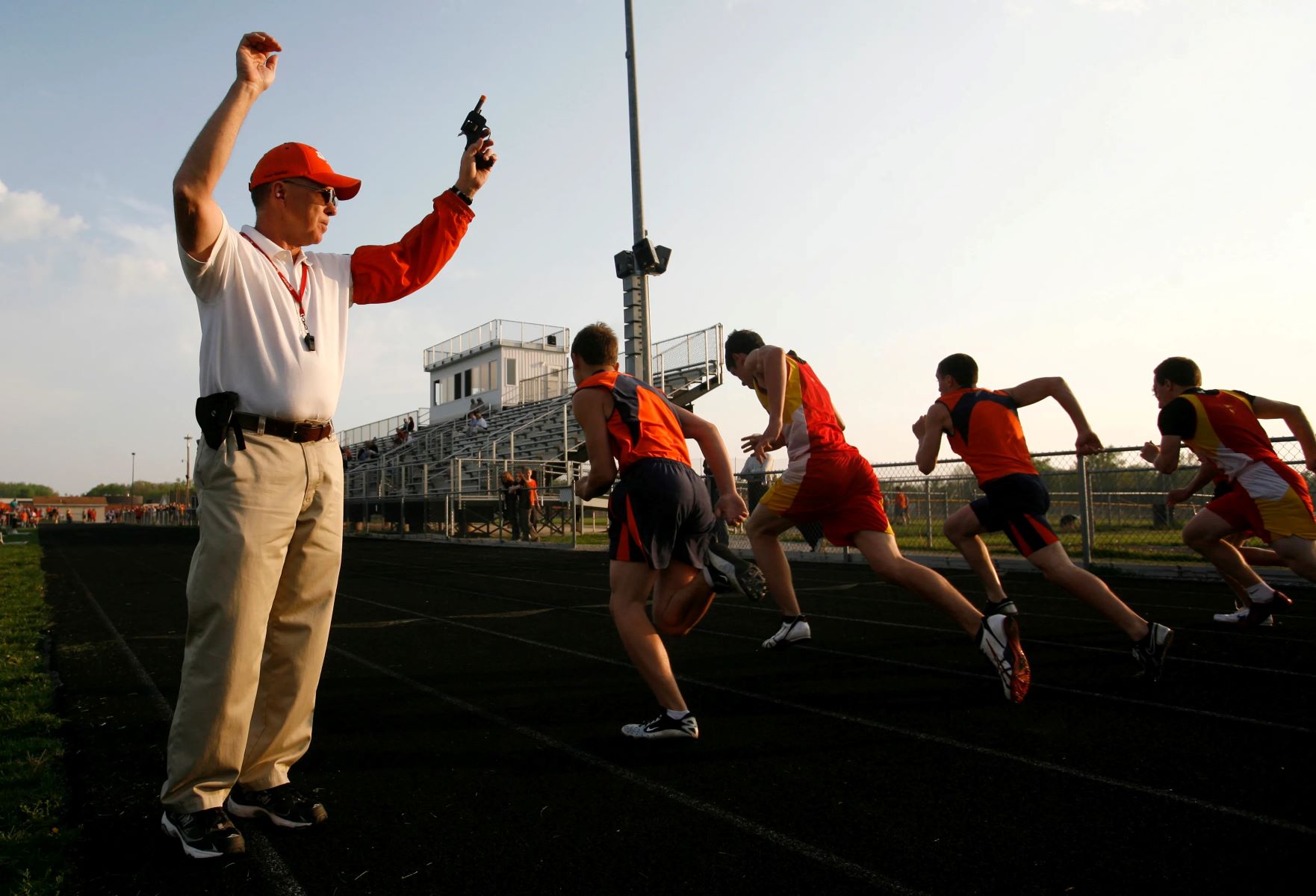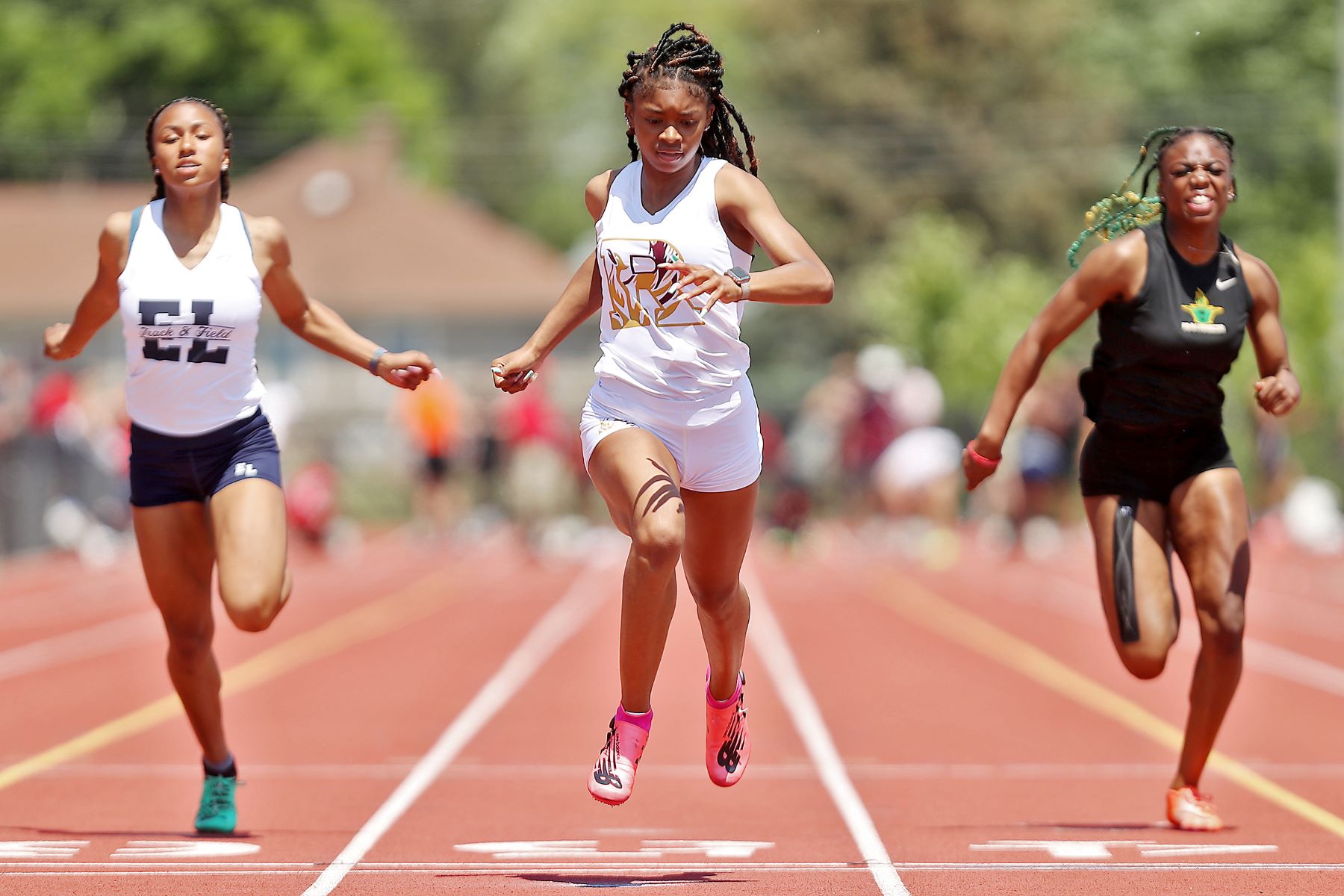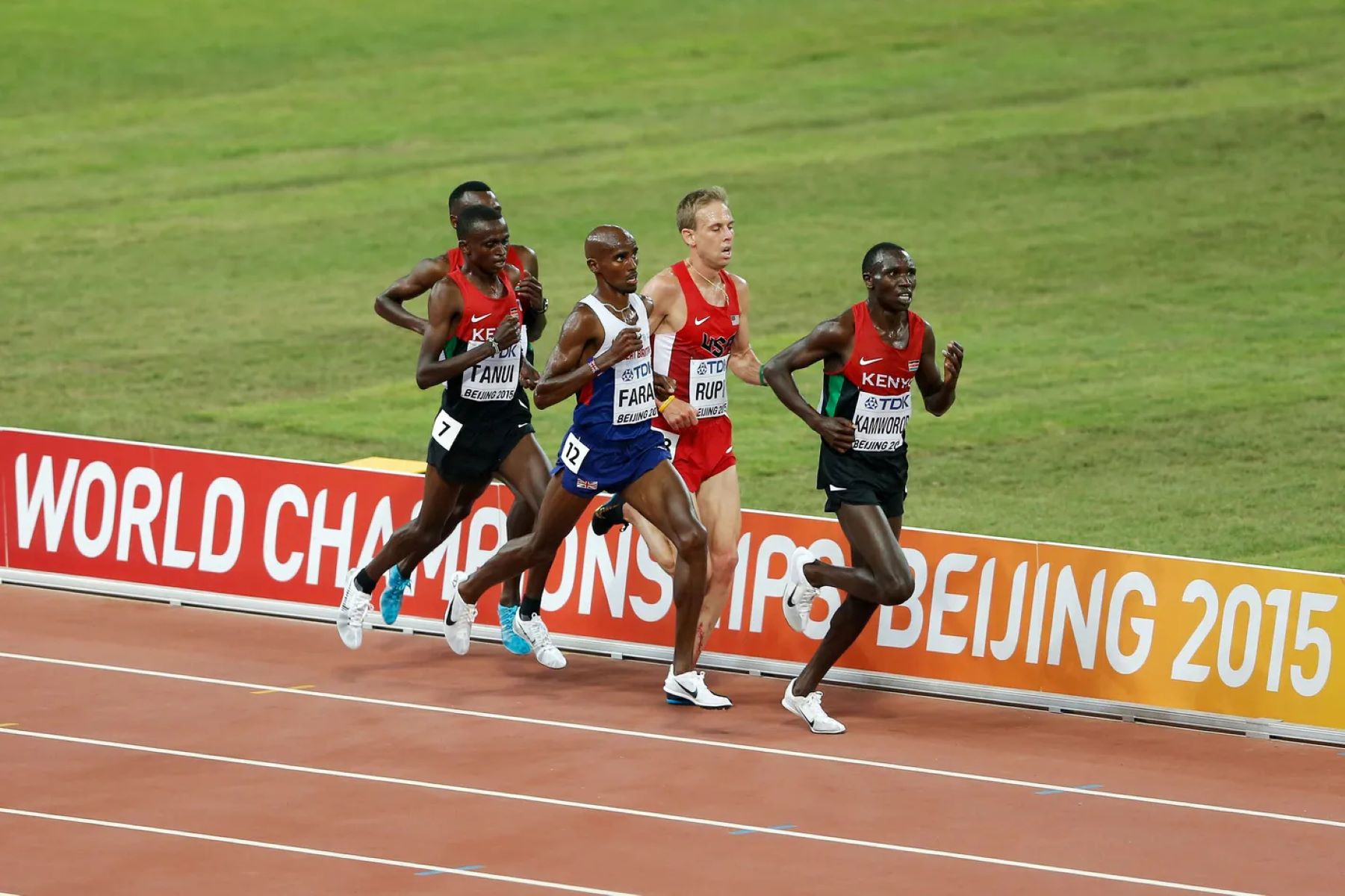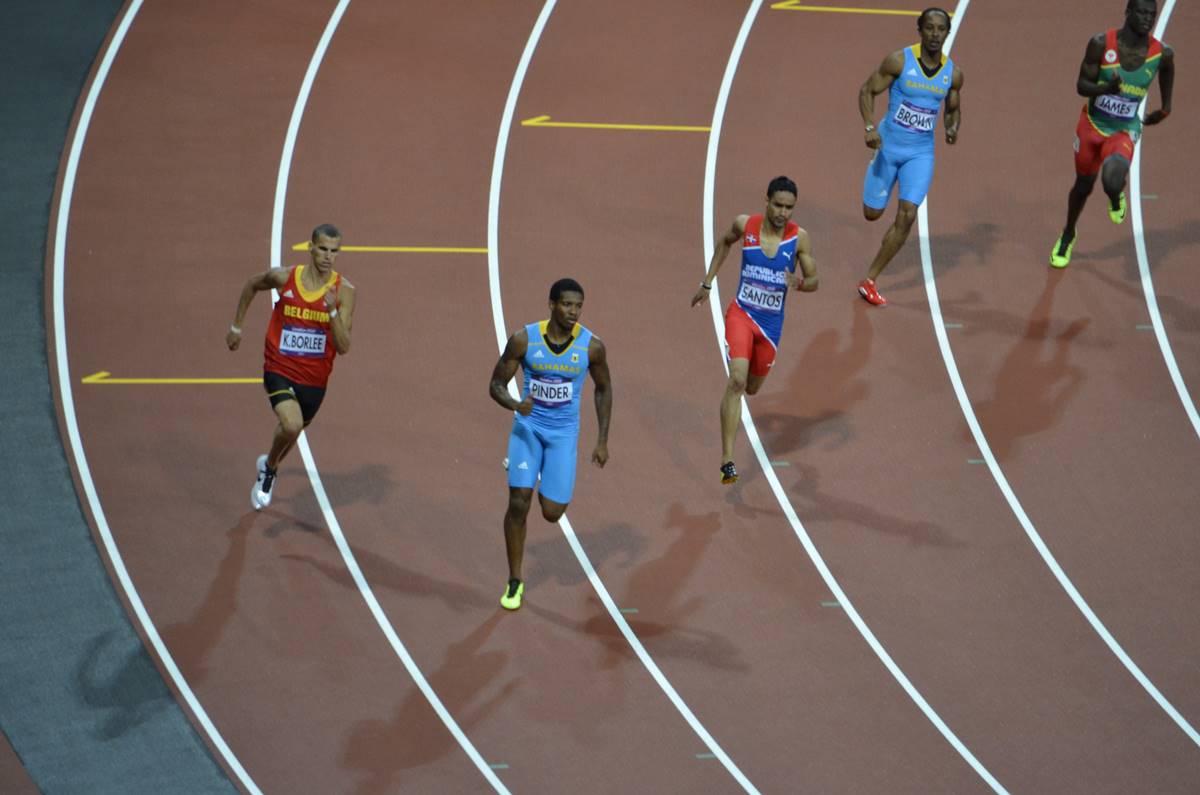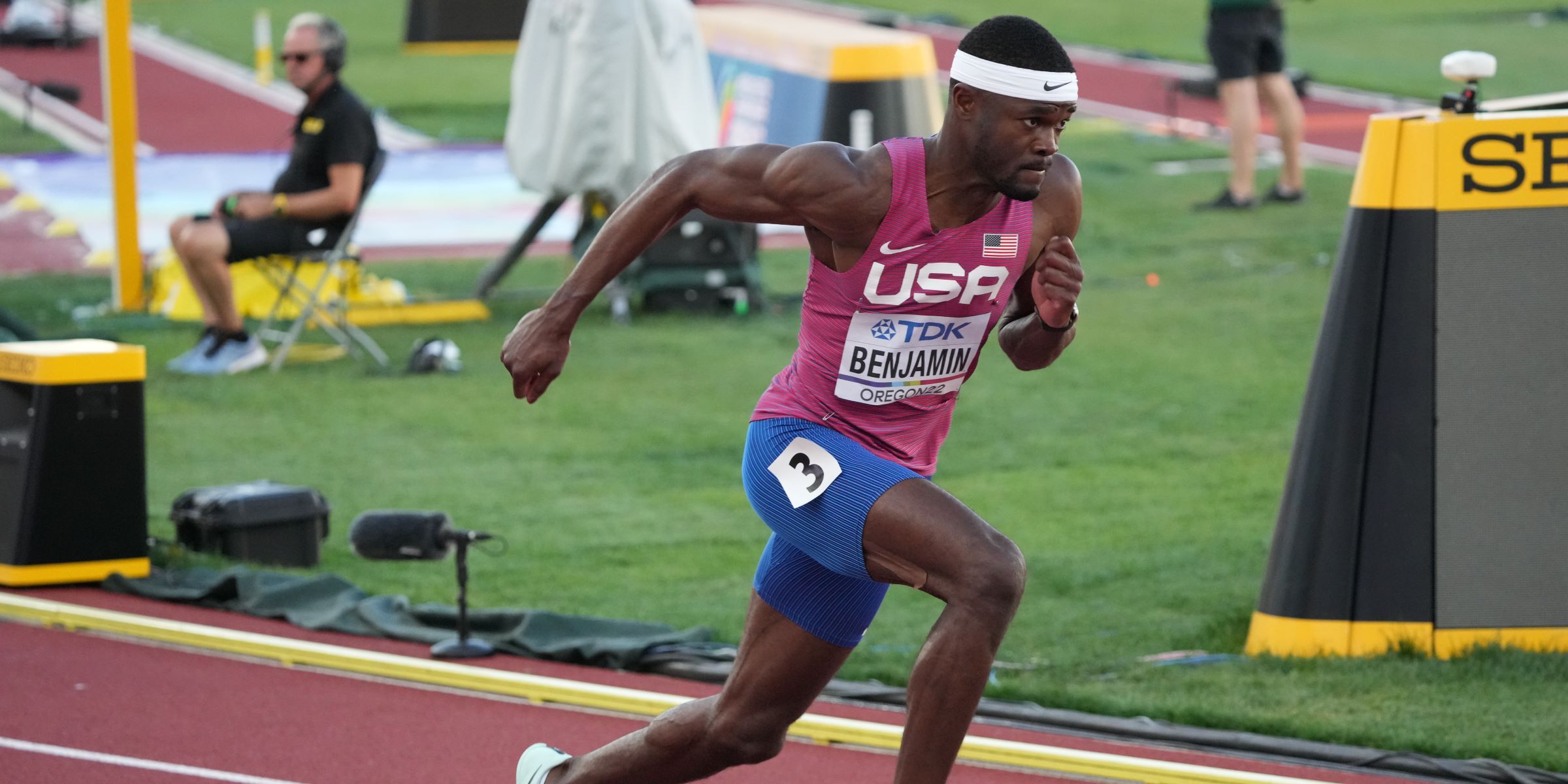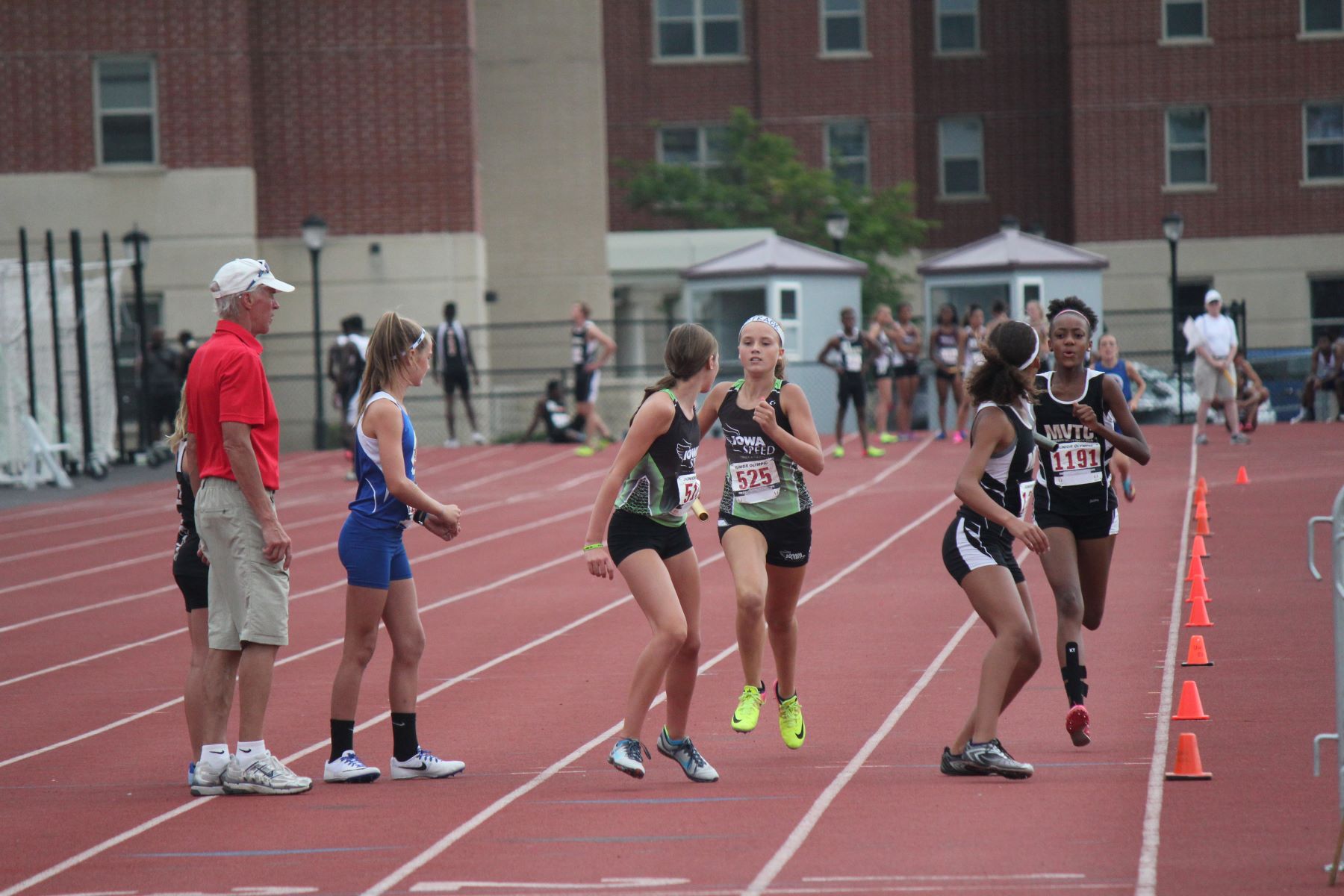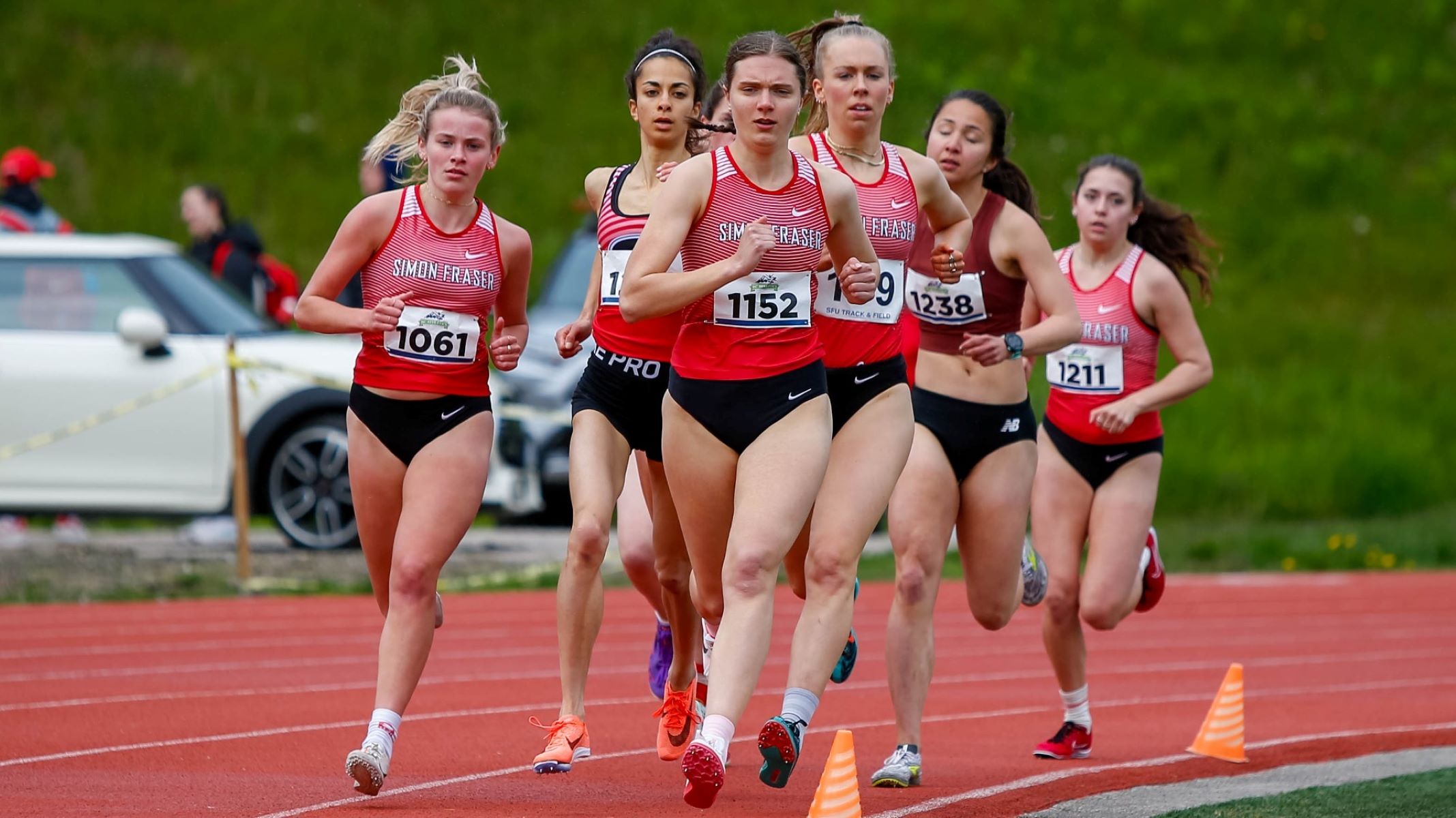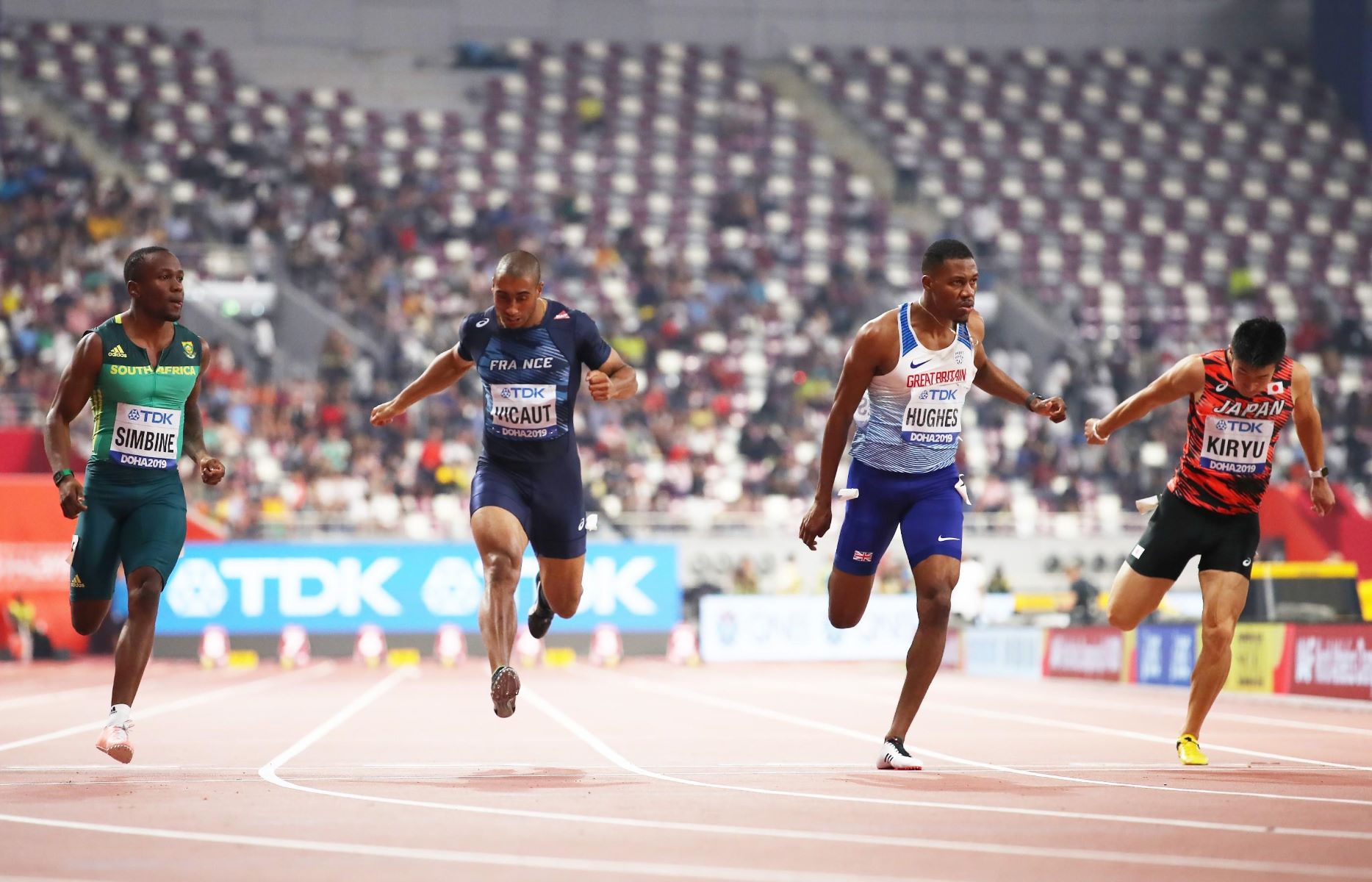

Featured
How To Get Faster At 100M Sprint
Modified: January 2, 2024
Improve your sprint speed with our featured guide on how to get faster at the 100M sprint. Boost your performance and achieve your goals!
Introduction
When it comes to sprinting, the 100m race is the pinnacle of speed and power. Whether you’re a competitive athlete or just looking to improve your overall speed, getting faster at the 100m sprint requires a combination of proper training techniques, explosive power, and efficient running form. This article will guide you through the key aspects of developing speed and agility in order to excel in the 100m sprint.
Before diving into the specific training methodologies, it’s important to be aware of the significance of proper warm-up techniques. Warming up your muscles and joints helps to prevent injuries and prepares your body for the intense efforts ahead. A dynamic warm-up routine that includes dynamic stretches, leg swings, and jogging can help increase blood flow, improve flexibility, and activate the muscles you’ll be using during the sprint.
Once properly warmed up, the next crucial element to focus on is explosive starts. A powerful start can give you the advantage needed to gain an edge over your competitors. Practice explosive starts by incorporating block start drills into your training routine. Focus on getting into a strong and balanced starting position, driving off the blocks with maximum force, while maintaining proper form and technique.
As the race progresses, the acceleration and drive phase play a pivotal role in maintaining speed and momentum. During this phase, it’s important to maintain a forward lean, driving your knees up and pumping your arms vigorously. Gradually, as you reach your maximum velocity, transition into the maximal velocity training phase.
In the maximal velocity training phase, you’ll work on maintaining top speed and improving your stride length and frequency. Incorporate speed drills such as flying sprints and hill sprints into your training routine to develop your ability to maintain high speed over longer distances.
Speed endurance is another crucial aspect of improving your performance in the 100m sprint. By improving your anaerobic threshold and ability to sustain high speed, you’ll be able to finish the race strong. Gradually increase the distance of your intense sprint workouts and include interval training to improve your speed endurance.
Plyometric exercises can greatly enhance your explosiveness and power. Incorporate exercises such as box jumps, plyometric push-ups, and bounding into your training routine to improve your ability to generate force and propel yourself forward.
Strength training plays an important role in sprinting. Focus on compound exercises such as squats, deadlifts, lunges, and plyometric squats to build lower body strength and power. Additionally, incorporate core and upper body exercises to maintain a balanced and strong physique.
Proper sprinting form is vital for maximizing your speed and efficiency. Focus on a forward lean, using your arms to generate power and maintain balance, and driving your knees up with each stride. Practice drills that reinforce proper sprinting mechanics, such as high knees, A-skips, and B-skips.
Finally, don’t overlook the importance of recovery and rest. Give your body time to recover and adapt to the training stimulus. Incorporate rest days into your training schedule, as well as proper nutrition and hydration to fuel your body and aid in recovery.
By implementing these training techniques and focusing on proper form and recovery, you’ll be on your way to improving your speed and performance in the 100m sprint. Stay committed, work hard, and enjoy the journey of becoming faster and more powerful.
Proper Warm-Up Techniques
Before diving into an intense sprinting session, it’s crucial to properly warm up your body to reduce the risk of injury and prepare your muscles and joints for the demands ahead. Here are some essential warm-up techniques to incorporate into your routine:
1. Dynamic Stretches: Begin your warm-up with dynamic stretches that involve moving parts of your body through a full range of motion. This can include exercises like leg swings, arm circles, and walking lunges. Dynamic stretching helps to increase blood flow, improve flexibility, and activate the muscles you’ll be using during the sprint.
2. Jogging: Start your warm-up by jogging at a moderate pace for about 5-10 minutes. This helps to increase your heart rate, warm up your muscles, and prepare your cardiovascular system for the upcoming exertion.
3. High Knees: Incorporate high knees into your warm-up routine to engage your hip flexors and improve your range of motion. Stand tall, lift one knee up towards your chest, and quickly alternate between legs. The goal is to lift your knees as high as possible while maintaining a controlled and rhythmic movement.
4. Butt Kicks: This exercise targets the quadriceps and hamstrings while also engaging your core. Begin by standing with your feet hip-width apart. From there, jog slowly while kicking your heels up towards your glutes. Aim to keep an upright posture and a steady pace.
5. Leg Swings: Stand next to a wall or a sturdy object for balance and stability. Swing one leg forward and backward, keeping it straight, and gradually increase the range of motion with each swing. Repeat for 10-15 swings on each leg. This exercise helps to loosen up the hip flexors and improve mobility.
6. Arm Swings: Stand with your feet shoulder-width apart and swing your arms in a controlled manner. Start with smaller swings and gradually increase the range of motion. Swing your arms forward and backward, crossing them in front of your body, and opening them wide to the sides. This exercise helps to warm up the shoulders and upper body.
Remember to perform these warm-up exercises in a controlled and deliberate manner. Take the time to focus on each movement and listen to your body. If you feel any pain or discomfort, modify the exercise or seek guidance from a qualified coach or trainer.
By incorporating these warm-up techniques into your sprinting routine, you’ll not only reduce the risk of injury but also optimize the performance of your muscles and improve your overall sprinting ability. Remember, a proper warm-up sets the foundation for a successful training session.
Explosive Starts
One of the key elements to master in the 100m sprint is the explosive start. A powerful start can give you the advantage needed to gain an edge over your competitors. Here are some tips to improve your explosive starts:
1. Proper Starting Position: Start by positioning yourself in the starting blocks with your dominant foot in the front and your other foot slightly behind. Your front knee should be positioned at a 90-degree angle, while your back leg should be slightly bent. Align your hips, shoulders, and head in a straight line to ensure a balanced and powerful start.
2. Quick Reaction Time: React to the starting gun or signal as quickly as possible. Train your mind to respond instantly to the sound, allowing your body to explode into action with minimal delay. Practice reacting to various cues to improve your reaction time and start explosiveness.
3. Drive Phase: As the gun goes off, focus on driving your legs forward while maintaining a low and powerful body position. Your first few steps should be quick and explosive, generating maximum force. Push off the blocks forcefully using your front leg and drive your arms forward with vigor.
4. Arm Action: Your arm action plays a crucial role in generating power and maintaining balance during the start. Keep your arms at a 90-degree angle and pump them vigorously from your shoulders down to your hips. The opposite arm should be in sync with the front leg, creating a coordinated and powerful movement.
5. Head Position: Maintain a forward gaze throughout the start. Avoid looking down or to the sides, as this can disrupt your balance and hinder your explosiveness. Keeping your head and neck aligned with your body will help you maintain a strong and efficient running posture.
6. Practice Block Starts: Incorporate block start drills into your training routine. Get comfortable with the process of setting up in the starting blocks and practice exploding out of them with maximum force. Work on optimizing your starting position, reaction time, and overall explosiveness. Regular practice will help you develop muscle memory and improve your confidence in executing explosive starts.
7. Strength Training: Strengthening your lower body muscles, such as your quadriceps, hamstrings, and glutes, can significantly improve your explosive power. Incorporate exercises like squats, lunges, and leg press into your strength training routine. Focus on explosive movements and lower body power to enhance your start.
Remember, explosiveness in the start is not just about raw power, but also about technique and coordination. Utilize these tips and techniques to enhance your explosive starts and gain an advantage over your competition in the 100m sprint.
Acceleration and Drive Phase
After a powerful start, the acceleration and drive phase of the 100m sprint becomes crucial. This phase focuses on maintaining speed and momentum as you transition from the explosive start to reaching your maximum velocity. Here are some key tips to improve your acceleration and drive phase:
1. Forward Lean: Lean your torso slightly forward from the hips while keeping your back straight. This forward lean helps to drive your body forward and optimize your acceleration. However, be careful not to lean too far forward, as it can negatively impact your balance and stride length.
2. Quick and Powerful Steps: During the acceleration phase, focus on taking quick and powerful steps. Drive your knee up and extend your leg forcefully, striking the ground with the ball of your foot. This allows you to generate maximum propulsion and maintain forward momentum.
3. Arm Drive: Coordinate your arm movement with your leg drive. As your legs are driving forward, your arms should be pumping in sync. Maintain a 90-degree angle at the elbows, drive your arms backward forcefully, and bring them forward with speed. This reciprocal arm and leg action helps to maintain a balanced and efficient running form.
4. Hip Extension: Emphasize hip extension during the drive phase to increase stride length and generate more power. Drive your knee up and forward, then extend your hip as your foot leaves the ground. This action helps to propel you forward and maximize your acceleration.
5. Focus on Rhythmic Breathing: Breathing rhythmically helps to maintain a relaxed and efficient running form. Inhale deeply through your nose and exhale through your mouth, syncing your breath with your strides. This not only energizes your muscles but also helps to minimize tension and improve overall performance.
6. Gradual Transition to Upright Posture: As you gain more speed and approach your maximal velocity, gradually transition from a forward lean to an upright posture. However, maintain a slight forward lean to utilize the force from your drive phase and maximize your momentum.
7. Visualization and Mental Focus: Mental preparation is crucial during the acceleration and drive phase. Visualize yourself accelerating smoothly and effortlessly. Focus on maintaining proper form and technique, and stay mentally engaged to make the most out of your sprint.
8. Strength Training: Develop lower body strength and power through exercises like squats, lunges, and plyometrics. Strong and explosive leg muscles greatly contribute to acceleration and drive phase performance.
Remember, the key to a successful acceleration and drive phase is a combination of efficient technique, strength, and mental focus. Incorporate these tips into your training routine to improve your speed and performance in the 100m sprint.
Maximal Velocity Training
As you progress through the 100m sprint, reaching and maintaining your maximal velocity becomes essential. Maximal velocity training focuses on improving your top speed and enhancing your stride length and frequency. Here are some key tips to incorporate into your training routine:
1. Flying Sprints: Flying sprints are a valuable training method to improve your ability to maintain high speed. After a short acceleration phase, reach your maximal velocity and maintain it for a set distance (e.g., 30-60 meters). Focus on relaxation and smooth running mechanics during these sprints.
2. Hill Sprints: Hill sprints are an effective way to develop power and strength while working on your maximal velocity. Find a hill or incline with a moderate gradient and sprint up it at maximum effort. The resistance from the hill forces you to generate more power, enhancing your ability to maintain top speed.
3. Overspeed Training: Utilize overspeed training techniques, such as assisted sprints or downhill sprints, to help your body adapt to higher speeds. Assisted sprints involve using a partner or resistance device to create an external force that propels you forward, while downhill sprints take advantage of gravity to increase your speed. These methods help improve your neuromuscular coordination and prepare your body for faster sprinting.
4. Stride Length and Frequency Drills: Incorporate specific drills to enhance your stride length and frequency. High knees, A-skips, and B-skips are effective drills that help develop your leg turnover and increase your stride length. Practice these drills regularly to improve your running mechanics and overall speed.
5. Sprint Mechanics Analysis: Work with a coach or trainer to analyze your sprint mechanics and identify areas for improvement. They can provide valuable feedback on your body position, arm swing, and leg drive, helping you make necessary adjustments to optimize your maximal velocity.
6. Plyometric Training: Plyometric exercises, such as bounds, depth jumps, and box jumps, can enhance your explosiveness and power, translating to improved maximal velocity. Incorporate plyometric exercises into your training routine to develop the ability to generate force and propel yourself forward at high speeds.
7. Proper Recovery: Maximal velocity training places significant demands on your body. Allow for adequate recovery between training sessions to prevent overtraining and help your muscles repair and adapt. Incorporate rest days into your training schedule, and prioritize proper nutrition and hydration to support optimal recovery.
Remember, achieving and maintaining maximal velocity requires a combination of proper technique, strength, and power. Incorporate these training methods into your routine to improve your top speed and excel in the 100m sprint.
Speed Endurance
In the world of sprinting, speed endurance is a crucial component of success. Speed endurance refers to the ability to maintain a high speed over an extended period of time, effectively improving your performance and finishing the 100m sprint strong. Here are some key tips to enhance your speed endurance:
1. Interval Training: Incorporate interval training into your workout routine to build speed endurance. This involves alternating between periods of high-intensity sprinting and active recovery. For example, sprint at near maximum effort for a set distance or time, then follow it with a period of slower jogging or walking to recover. Repeat this cycle for several sets to challenge and improve your speed endurance.
2. Increase Sprint Distance: Gradually increase the distance of your sprint workouts to develop your speed endurance. Start with shorter sprints, such as 60 meters, and progressively work your way up to longer distances, such as 80 or 100 meters. This trains your body to maintain a high level of effort and speed over an extended distance, preparing you for the demands of the 100m sprint.
3. Tempo Runs: Tempo runs are longer, submaximal runs aimed at improving endurance and lactate threshold. These runs are typically performed at a pace slightly below your maximum effort but faster than a comfortable jog. Implement tempo runs into your training program to build your aerobic capacity and improve your ability to sustain a challenging pace.
4. Repeat Sprints: Incorporate repeat sprints into your training sessions. These involve performing multiple sprints at a high intensity with short rest periods in between. By repeatedly challenging your body to maintain speed and power, you’ll improve your capacity to sustain high-intensity efforts over time.
5. Fartlek Training: Fartlek, which means “speed play” in Swedish, involves mixing up different intensities within a run. During a fartlek session, alternate between periods of running at a comfortable pace and periods of higher intensity, such as sprinting or running at a faster speed. This type of training helps to improve your overall endurance and adaptability to different paces.
6. Mental Resilience: Speed endurance is not only about physical fitness, but also mental resilience. Train your mind to embrace discomfort and overcome fatigue during sprints. Develop mental strategies such as positive self-talk, visualization, and focusing on small milestones to stay motivated and push through challenging moments during the race.
7. Proper Recovery: Allow yourself sufficient recovery time between speed endurance training sessions. Speed endurance workouts put a significant demand on your muscles, so it’s important to prioritize proper rest, nutrition, and hydration to aid in the recovery process and optimize your performance.
By incorporating these tips into your training regimen, you’ll enhance your speed endurance and be better equipped to maintain a strong and fast performance throughout the 100m sprint. Remember, speed endurance is developed over time with consistent effort and dedication to your training.
Plyometric Exercises
Plyometric exercises are a valuable addition to any sprinter’s training regimen. These explosive movements focus on developing power, strength, and elasticity in the muscles, which can greatly enhance your sprinting performance. Here are some key plyometric exercises to incorporate into your training:
1. Box Jumps: Box jumps are a classic plyometric exercise that targets the lower body muscles, particularly the quadriceps, hamstrings, and glutes. Start by standing in front of a sturdy box or platform. Squat down, then explode upward, using your arms for momentum, and land softly on top of the box. Step down and repeat for multiple repetitions. Gradually increase the height of the box as your strength and power improve.
2. Depth Jumps: Depth jumps are an advanced plyometric exercise that focuses on eccentric loading and rapid force generation. Find a platform or box at knee height or higher. Step off the platform, quickly absorb the impact upon landing, and immediately explode upward into a vertical jump. This exercise helps improve neuromuscular coordination, reactive strength, and explosiveness.
3. Bounding: Bounding involves exaggerated and powerful running strides. With each stride, drive your knee upwards to your waist level and powerfully extend your leg forward, pushing off the ground with explosive force. Swing your arms in coordination with your leg movements for added momentum. Bounding helps to improve your stride length and develop power in your glutes and hamstrings.
4. Medicine Ball Throws: Medicine ball throws are excellent for developing upper body power and coordination. Stand with your feet shoulder-width apart, holding a medicine ball at chest level. Explode forward, simultaneously extending your arms and releasing the ball into the air. Catch the ball and repeat for multiple repetitions. This exercise can help improve arm drive and overall power transfer during sprinting.
5. Plyometric Push-Ups: Plyometric push-ups target the chest, triceps, and shoulders while also enhancing explosive upper body power. Begin in a standard push-up position, then lower yourself to the ground before forcefully pushing off with enough power to lift your hands off the ground. Catch yourself in the air and immediately lower yourself back down into the next repetition.
6. Single-Leg Hops: Single-leg hops are great for developing lower body power, stability, and balance. Stand on one leg with a slight bend in the knee. Keeping your core tight, explosively jump forward as far as you can while maintaining balance. Land on the same leg and immediately explode into the next repetition. Repeat for multiple sets before switching legs.
7. Split Squat Jumps: Split squat jumps target the lower body muscles and help improve explosive power. Begin in a lunge position, with one leg forward and the other leg extended backward. Lower yourself into a lunge, then explode upward into a jump, switching the position of your legs mid-air. Upon landing, immediately repeat the movement. This exercise helps improve leg power and coordination.
Always prioritize proper form and safety when performing plyometric exercises. Start with low-intensity variations and gradually progress to more advanced movements as your strength and power improve. It’s also important to allow for adequate recovery between plyometric sessions to prevent overuse injuries.
By incorporating plyometric exercises into your training routine, you’ll enhance your explosiveness, power, and overall sprinting performance. Remember, consistent and progressive training is key to effectively incorporate plyometric exercises into your regimen.
Strength Training
Strength training is a vital component of a sprinter’s training program. Improving overall strength helps enhance power output, muscular endurance, and injury prevention. By incorporating specific exercises, you can develop the strength required for explosive starts, efficient running mechanics, and increased speed. Here are some key aspects to consider when implementing strength training for sprinting:
1. Compound Exercises: Focus on compound exercises that target multiple muscle groups and mimic the movements used during sprinting. These exercises include squats, deadlifts, lunges, and step-ups. Compound movements engage the lower body, core, and stabilizer muscles, building functional strength and power.
2. Squats: Squats are a foundational exercise for strength development. They target the quadriceps, hamstrings, glutes, and core. Perform variations such as back squats, front squats, and split squats to work on different muscles and improve overall lower body strength and stability.
3. Deadlifts: Deadlifts are an effective exercise for strengthening the posterior chain, including the glutes, hamstrings, and lower back. Proper form and technique are essential to maximize their benefits and minimize the risk of injury. Start with lighter weights and gradually increase the load as you develop strength and confidence.
4. Lunges: Lunges help improve single-leg strength, stability, and balance. Perform walking lunges, reverse lunges, or stationary lunges to target different muscle groups. Add dumbbells or a barbell for additional resistance and progression.
5. Plyometric Squats: Incorporate plyometric variations of squats to develop explosive power and strength. Examples include jump squats and squat jumps, which involve explosively jumping from a squatting position and landing softly. These exercises improve your ability to generate force quickly and increase power output.
6. Core and Stability Exercises: A strong core is crucial for maintaining balance, transferring power, and improving running efficiency. Include exercises such as planks, Russian twists, medicine ball twists, and side planks to target the abdominals, obliques, and deep core muscles.
7. Upper Body Strength: Don’t neglect your upper body strength as it contributes to overall balance and stability. Incorporate exercises such as push-ups, pull-ups, rows, and shoulder presses to develop upper body strength and improve arm drive during sprinting.
8. Periodization: Implement a periodization plan that gradually increases the intensity and volume of your strength training sessions. This allows for progressive overload and proper recovery, leading to continuous strength gains and injury prevention.
9. Proper Form and Technique: Maintain proper form and technique during strength training exercises to avoid injury and maximize results. If necessary, seek guidance from a qualified strength and conditioning coach to ensure correct execution.
10. Recovery and Rest: Allow for adequate rest and recovery between strength training sessions. This provides time for muscle repair and adaptation, preventing overtraining and reducing the risk of injury. Prioritize sleep, nutrition, and hydration to support optimal recovery.
Remember, sprinting is a whole-body movement that requires strength and power in multiple muscle groups. Incorporating a well-structured and progressive strength training program will improve your performance, reduce the risk of injury, and enhance your overall running ability.
Proper Sprinting Form
Proper sprinting form is essential for optimizing speed, efficiency, and injury prevention. Developing and maintaining correct technique allows you to maximize your potential as a sprinter. Here are some key elements to focus on for proper sprinting form:
1. Forward Lean: Maintain a slight forward lean from your ankles, initiating the movement from your core. This forward lean helps to propel your body forward and allows for an efficient transfer of power.
2. Head Position: Keep your head in a neutral position, looking straight ahead. Avoid looking down or tilting your head to the side, as this can disrupt your balance and form. Maintaining a stable head position helps to align your body and maintain a smooth running motion.
3. Arm Action: Your arm action plays a significant role in sprinting mechanics. Keep your arms at approximately a 90-degree angle, relaxed but not too loose. Drive your arms forward and backward in a straight line, coordinating the movement with your leg drive. The arms should swing naturally and actively pump to generate power and maintain balance.
4. Leg Drive and Knee Lift: Drive your knees up and forward with each stride, actively and explosively. The knee lift should be quick and powerful, allowing for a complete extension of the leg behind you. Focus on pushing off forcefully with the ball of your foot, driving your foot straight down and back for maximum power transfer.
5. Pelvic Position: Ensure that your pelvis is stable and level during sprinting. Avoid excessive tilting of the pelvis or overarching of the lower back, as it can lead to inefficient movement patterns and potential injury. Engage your core muscles to maintain pelvic stability and support your running posture.
6. Stride Length and Frequency: Strive for a balance between stride length and frequency. Longer strides can help cover more ground, while a higher stride frequency allows for faster turnover and speed. Focus on fully extending your legs behind you and quickly driving them back to the ground for optimal efficiency.
7. Relaxation and Fluidity: Strive to be relaxed and fluid in your movements. Tension and stiffness can hinder your speed and efficiency. Allow your body to move naturally and freely, while maintaining proper alignment and technique. Stay relaxed in your shoulders, hands, and facial muscles to avoid unnecessary energy expenditure.
8. Video Analysis and Feedback: Utilize video analysis to assess your sprinting form. Record yourself during practice sessions or seek feedback from a coach or experienced sprinter. Identify areas for improvement and make necessary adjustments to your technique based on the feedback received.
Consistency and practice are key to ingraining proper sprinting form. Perform drills and exercises that target specific aspects of your sprinting form, such as high knees, A-skips, and B-skips, to reinforce correct technique. With time and effort, your sprinting form will become more efficient and natural, ultimately leading to improved speed and performance.
Recovery and Rest
Recovery and rest are crucial components of any training program, especially for sprinters. Proper recovery allows your body to adapt to the demands of training, reduce the risk of injury, and optimize performance. Here are some key factors to consider for effective recovery and rest:
1. Rest Days: Incorporate regular rest days into your training schedule. This allows your muscles, tendons, and ligaments time to repair and rebuild. Rest days also help to prevent overtraining and reduce the risk of overuse injuries. Listen to your body and give it the rest it needs to perform at its best.
2. Sleep: Aim for quality sleep to support your body’s recovery processes. During sleep, your body releases growth hormones, repairs damaged tissues, and rejuvenates itself. Strive for 7-9 hours of uninterrupted sleep each night to enhance recovery and overall well-being.
3. Nutrition: Proper nutrition plays a vital role in recovery. Fuel your body with a well-balanced diet that includes lean proteins, complex carbohydrates, and healthy fats. Optimize your intake of vitamins, minerals, and antioxidants through a variety of fruits and vegetables. Adequate hydration is also essential for optimal recovery.
4. Active Recovery: Incorporate light, low-impact activities into your recovery days. This can include activities such as light jogging, swimming, yoga, foam rolling, or stretching. Active recovery promotes blood flow, helps flush out waste products, and aids in muscle recovery.
5. Sports Massage: Consider incorporating regular sports massages into your recovery routine. Sports massages can help reduce muscle tension, improve flexibility, and enhance circulation. Consult with a qualified therapist who specializes in sports massage to target specific areas of concern.
6. Cold and Hot Therapy: Utilize cold and hot therapy techniques to aid in recovery. Cold therapy, such as ice baths or cold showers, can help reduce inflammation and muscle soreness. Hot therapy, such as warm baths or heat packs, can help increase blood flow and promote muscle relaxation. Alternate between cold and hot treatments to optimize recovery benefits.
7. Active Stretching: Engage in regular stretching to improve flexibility and range of motion. Perform dynamic stretches before training sessions to warm up your muscles, and static stretches after workouts to cool down and promote muscle recovery. Consult with a coach or trainer to learn proper stretching techniques.
8. Mental and Emotional Well-being: Pay attention to your mental and emotional well-being as part of your recovery. Managing stress levels, practicing relaxation techniques (such as meditation or deep breathing), and engaging in activities that bring you joy and relaxation can contribute to overall recovery and performance.
Remember, recovery and rest are integral parts of the training process. Neglecting these aspects can lead to burnout, decreased performance, and increased risk of injury. By prioritizing proper recovery strategies and allowing your body time to rest, you’ll maximize the benefits of your training and optimize your sprinting performance.
Conclusion
The 100m sprint is a challenging and exhilarating race that requires a combination of speed, power, and proper technique. By implementing the training techniques and principles outlined in this article, you can improve your performance and become faster at the 100m sprint.
Proper warm-up techniques help prepare your body for the intense efforts ahead, reducing the risk of injury. Explosive starts set the foundation for a strong race, and mastering the acceleration and drive phase is vital for maintaining speed and momentum. Maximal velocity training focuses on developing top speed and stride mechanics.
In addition, speed endurance training enhances your ability to sustain high speed and finish the race strong. Incorporating plyometric exercises and strength training improves power output and overall strength, which are essential for explosive performance.
Proper sprinting form ensures efficiency and reduces the risk of injury. Finally, recovery and rest are crucial for allowing your body to adapt and recover from training, optimizing your performance.
Remember, consistency and dedication are key when undertaking a training program to improve your 100m sprint performance. Listen to your body and make gradual progressions to prevent overtraining and minimize the risk of injury.
Embrace the journey of becoming faster, be patient with yourself, and celebrate each milestone along the way. Through discipline, perseverance, and a commitment to proper training techniques, you can achieve your goals and excel in the thrilling, fast-paced world of the 100m sprint.
